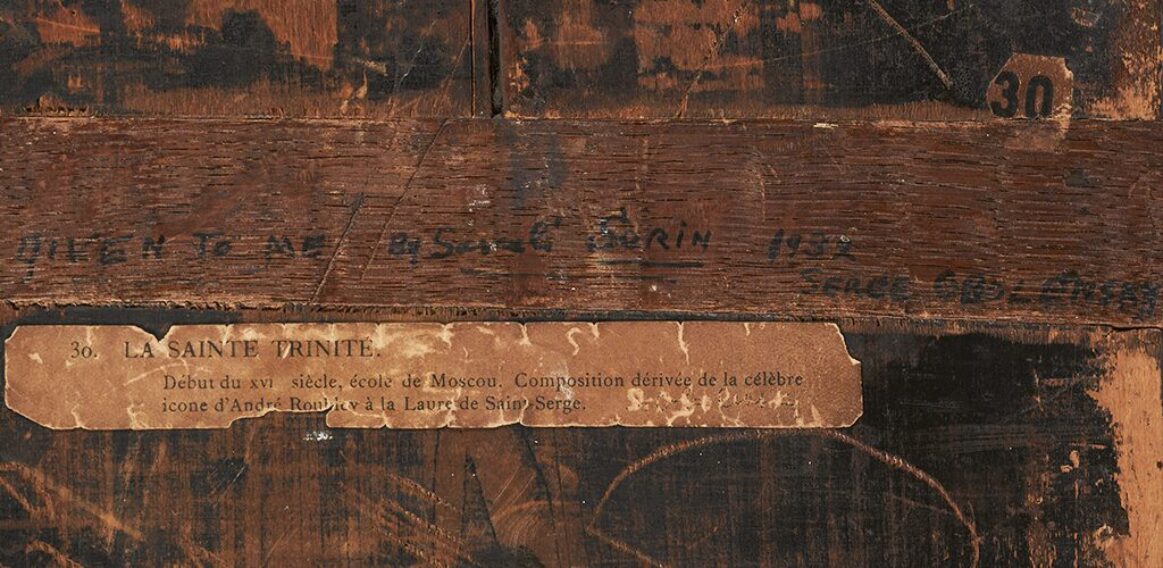Provenance
Saveli Abramovich Sorin (1878-1953)
Prince Serge Obolensky (1890-1978), presented in 1932
Marilyn Wall Obolensky, Grosse Pointe Farms
Traditionally painted in subtle, subdued earth colours against an ochre background and border, The Old Testament Trinity portrays three angels, an embodiment of the Holy Trinity, dining together at the table. The stylised architectural background represents Abraham’s house, while the central verdant tree symbolises the oak of Mamre, where Abraham first met and greeted the angels.
Several iconographic versions of the composition exist. The present image is reminiscent of the iconography developed by Andrei Rublev’s in his famous icon of the same subject (1425, State Tretyakov Gallery, Moscow). It is based on Genesis 18:1-16, which narrates the story of God’s revelation to Abraham in the form of three angels at the oak tree of Mamre. In Christian tradition, Abraham’s vision is interpreted as prophetic, foreshadowing the New Testament revelation that God is one in three (a prefiguration of the Holy Trinity). The meal Abraham offers the angels prefigures the Eucharist: the angels are seated around an altar-like table; in the centre is a chalice of the Eucharist with the head of a sacrificial calf, a symbol of Christ, the lamb of the New Testament.
This icon comes from the private collection of Prince Serge Obolensky (1890-1978), a gift from the prominent Russian artist Saveli Sorin. Prince Obolensky was first married to Alexander II daughter Catherine Yurievskaya. After the revolution, he fled to London, and eventually settled in the US. In America, he married his second wife Alice Astor of the Astor family.
Obolensky was an avid collector of Russian art. Works from his collection have recently sold for record prices: notably bust of Ivan the Terrible by Mark Antokolski (Christie’s London, 2014, $269,000) and a portrait of Prince Pyotr Vasilievich Lopukhin by Vladimir Borovikovsky (Christie’s London, 2014, £2,154,500).













